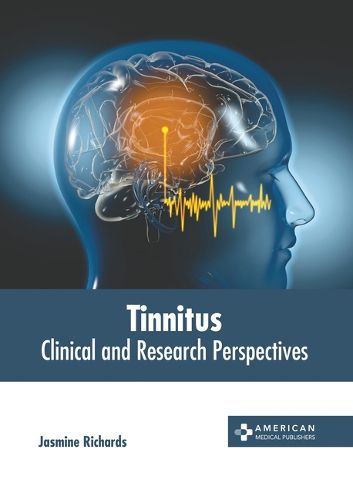Readings Newsletter
Become a Readings Member to make your shopping experience even easier.
Sign in or sign up for free!
You’re not far away from qualifying for FREE standard shipping within Australia
You’ve qualified for FREE standard shipping within Australia
The cart is loading…






The impairment in perceiving or processing auditory information is considered to be a hearing disorder. Tinnitus is a common hearing disorder. It involves perceiving sound even in the absence of corresponding external sound. Although it is normal to feel a faint sound in a completely quiet place, the problem arises when it interferes with normal hearing. The sound a person hears in tinnitus is described as ringing, clicking, buzzing, hissing, or roaring. It can be caused due to several factors including ear infections, disease of the heart or blood vessels, Meniere's disease, brain tumors, acoustic neuromas, and migraines. Tinnitus is generally diagnosed based on the person's description. An audiogram, as well as an otolaryngological and neurological examination can also be used to support the overall diagnosis. Medical imaging, such as magnetic resonance imaging (MRI), may also be used if specific issues are discovered. This book explores all the important aspects of tinnitus in the present day scenario. For all those who are interested in the clinical and research perspectives on this medical condition, it can prove to be an essential guide.
$9.00 standard shipping within Australia
FREE standard shipping within Australia for orders over $100.00
Express & International shipping calculated at checkout
The impairment in perceiving or processing auditory information is considered to be a hearing disorder. Tinnitus is a common hearing disorder. It involves perceiving sound even in the absence of corresponding external sound. Although it is normal to feel a faint sound in a completely quiet place, the problem arises when it interferes with normal hearing. The sound a person hears in tinnitus is described as ringing, clicking, buzzing, hissing, or roaring. It can be caused due to several factors including ear infections, disease of the heart or blood vessels, Meniere's disease, brain tumors, acoustic neuromas, and migraines. Tinnitus is generally diagnosed based on the person's description. An audiogram, as well as an otolaryngological and neurological examination can also be used to support the overall diagnosis. Medical imaging, such as magnetic resonance imaging (MRI), may also be used if specific issues are discovered. This book explores all the important aspects of tinnitus in the present day scenario. For all those who are interested in the clinical and research perspectives on this medical condition, it can prove to be an essential guide.